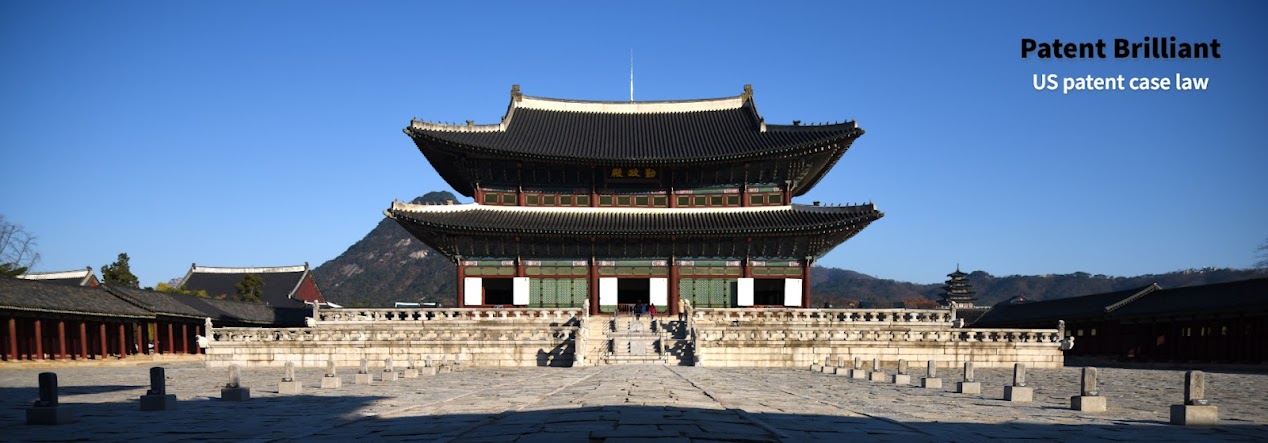Continental Can Co. USA, v. Monsanto Co., 948 F.2d 1264 (Fed. Cir. 1991)
“The inherent teaching of a prior art reference, a question of fact, arises both in the context of anticipation and obviousness." In re Napier, Fed. Cir. (1995)
Prior art 에 의하여 102 및 103 위반으로 특허 거절 (무효) 시, 그 기재사항은 inherent teaching (내재적 교시) 에 의할 수 있다. (반드시 명시적인 (explicit) 기재에 의하지 않을 수 있다는 의미이다.)
즉, new use, new function 또는 unknown property 가 prior art 에 inherent (내재된) 한 것이라면, 그러한 발견을 claim 으로 하여 특허 받을 수 없다는 의미이다. 또한, 발명시 (at the time of the invention) 를 기준으로, PHOSITA 가 inherent disclosure 를 인지할 필요도 없다.
또한, 해당 subject matter 가 prior art 에 inherent 했으면 족하다. Schering Corp. v. Geneva Pharm. Inc., (Fed. Cir. 2003) 즉, 특허출원된 발명이 PTO 에 의하여 inherent disclosure 를 발견하지 못한 까닭에 특허등록 되더라도, 후에 inherent disclosure 를 입증하면 무효로 할 수 있다는 의미이다.
다만, PTO 심사관은 inherency 에 의한 거절 시, 어떠한 결과 (result) 내지 성질 (characteristic) 이 내재할 것이라는 가능성 (may) 만으로는 거절 사유 (prima facie case of anticipation) 로 할 수 없다. In re Rijckaert, Fed. Cir. (1993); 다음의 판결 참조:
In relying upon the theory of inherency, the examiner must provide a basis in fact and/or technical reasoning to reasonably support the determination that the allegedly inherent characteristic necessarily flows from the teachings of the applied prior art." Ex parte Levy, Bd. Pat. App. & Inter. (1990)
Continental Can v. Monsanto 사건에서, Monsanto 는 Continental Can 의 US4,108,324 (Ribbed bottom structure for plastic container, 1978) 의 "hollow ribs by blow-molding" 이 prior art (Macus) 에 의하여 신규성을 상실한다고 주장하였다. Macus 에는 “hollow ribs” 라는 명시적 기재는 없지만, ‘324 와 동일한 방법 즉, blow-molding 으로 plastic ribbed structure for plastic container 를 제조하였으므로, “hollow ribs” 가 inherent disclosure 에 해당한다는 것이다.
이에 대하여, 재판부는 inherency 가 단순한 개연성/가능성 (probability or possibility) 만으로는 성립하지 않는다고 판시하였다. 즉, 제조방법과 구조적 특징 간의 단순한 개연성 만으로는 inherent disclosure 에 이르렀다고 볼 수 없고, 필연적 존재 (necessarily present) 가 필요하다고 하였다. 즉, blow-molding 을 하였더니, 필연적으로 "hollow ribs" 가 성형되는 경우, 필연적 존재의 관계가 된다. 그리고 이러한 필연적 존재의 판단 기준은 PHOSITA 이다.
*** Inherent disclosure 에 이르는 것으로 necessarily present 외에, natural result (자연적으로 그렇게 발생할 수 밖에 없는 결과) 에 의할 수도 있다. Par Pharmaceutical, Inc. v. TWI Pharmaceutical, Inc., Fed. Cir. (2014)
재판부는 extrinsic evidence (e.g., other patent, expert testimony) 로써 inherency 입증이 가능하다고 하였다.


댓글 없음:
댓글 쓰기